Table of Contents
You know that confused feeling you get when you pick a food item off the shelf at the supermarket and try to decode what it says on the packaging? All the small print, countless numbers, unfamiliar words and so many attractive symbols and claims makes your head spin. No wonder you often give up and simply buy what you like. Food labels can be pretty confusing. Therefore, in today’s article, we will teach you how to read and understand food packaging.
Can manufacturers put anything they want on the packaging?
Many people think that food packaging is solely in the hands of manufacturers and their imagination. However, that’s not how it is. Food labelling is subject to relatively strict legislation that dictates certain obligations and rules. The European Union determines regulations that apply to all its member states. In addition, individual countries may also have their own rules that they set themselves. [8]
What to look for on the packaging and how to understand the labels?
1. Ingredients list
The first step when deciding which food to buy should definitely be to check the ingredients list. The ingredients are always listed in descending order. This means that the first one listed is always going to be the one which is represented in the food the most. The first few things on the list will often tell you whether it is a suitable food or not. [18]
Also note the number of ingredients in the list. The longer the ingredients list, the more the food has been processed. A long list of ingredients often means that the food is full of unnecessary additives. The goal should be to buy as little industrially processed food as possible.
The following table compares of two versions of oats. Which one do you normally get?
| Homemade Oats | Store-bought Sweetened Instant Oats |
|---|---|
| pure oats milk / yogurt / whey protein fresh or lyophilized fruit natural nuts | oats 50%, powdered milk (lactose, milk protein, partially solidified soybean oil, milk fat, glucose syrup), fructose, corn starch, freeze-dried raspberries, salt, flavourings, citric acid |
Instant oats often look like a great option for breakfast. In reality, however, in most cases, you are buying a mix of unnecessary additives that have no business in this dish. There are some exceptions, but you can find those only after carefully reading the ingredients list. However, a better solution is to reserve 5-10 minutes of your time and cook plain oats (or just pour boiling water over them) and season according to your preferences. In the end, you will get not only a better composition, but also a longer feeling of satiety, because it will contain a larger amount of protein and fibre. The same goes for any dishes and foods. The simpler their ingredients list, the better for you.

2. Nutrition facts table
The nutrition facts table is a very important part of the packaging, because it tells you how nutritionally rich the given food is and how much energy it contains. The energy value must be indicated on the packaging. It is given in kilocalories (kcal) and kilojoules (kJ), where 1 kcal = 4.2 kJ. Underneath you will also find the reference value of energy intake for an average adult, which is 2,000 kcal (8,400 kJ). Furthermore, there will also be the information about the content of carbohydrates, sugars, proteins, fat, saturated fatty acids and salt. Non-mandatory but often mentioned information are fibre, sugar alcohols, monounsaturated and polyunsaturated fatty acids, vitamins, etc. [18]
You might be interested in these products:
Quantity per 100 g or per serving?
First of all, always pay attention to the amount of food for which the given energy and nutrient values are stated. Typically, it is per 100 g or 100 ml of food, but it may happen that the manufacturer also states the amount per serving (for example, 50 g). However, the size of the serving shown on the package may not be your usual portion.
For example, breakfast cereals usually have a set portion of 30 g. The energy value of this portion can be around 130 kcal. But for most of you, it probably wouldn’t be enough for a breakfast, so you double the portion (60g). The energy intake from this breakfast cereals suddenly rises to 260 kcal, which is 13% of the average recommended daily energy intake.
Therefore, always find out how much energy is in 100 g of food, what portion size is indicated by the manufacturer and how much you put on your plate.

Carbohydrates
Carbohydrates are one large group of nutrients, which is divided into polysaccharides, oligosaccharides, disaccharides and monosaccharides.
- Monosaccharides are the simplest form of carbohydrates. They are made up of only one carbohydrate molecule. These are, for example, glucose, fructose or galactose. Monosaccharides are absorbed from the digestive tract into the blood the fastest.
- Disaccharides consist of two monosaccharides. These are, for example, sucrose (beet and cane sugar) or lactose (milk sugar).
- Oligosaccharides consist of 2 to 10 monosaccharides (including disaccharides).
- Polysaccharides, also called complex carbohydrates, are made up of long chains of monosaccharide molecules. A typical polysaccharide in our diet is starch, which is composed of glucose molecules. Compared to other carbohydrates, polysaccharides take longer to digest, thanks to which they satiate better and at the same time help maintain a stable blood sugar level. Polysaccharides should make up 45-60% of the total daily energy intake. [4]
Disaccharides and monosaccharides are also known as sugars. The amount of carbohydrates shown in the nutrition facts table contains all these subgroups.
| Per 100 g of food | |
|---|---|
| Carbohydrates | 50 g |
| – of which sugars | 20 g |
The manufacturer is also obliged to indicate the amount of contained sugars. The following table shows that the total amount of carbohydrates in the food is 50 g (per 100 g). Of this, 20 g of the total 50 g are sugars (monosaccharides and disaccharides). The remaining 30 g are therefore made up of polysaccharides and other types of carbohydrates.
The daily sugar intake should not exceed 10% of the total daily energy intake. This amount includes sugar that is added to food, but also that which occurs naturally in them (e.g. sugar in fruit or dairy products). [2]
Always supplement reading the table with information from the ingredients list so that you know what source of sugar it is. Ideally, most of the sugar should come from fruit. On the contrary, try to limit foods that are sweetened with glucose or fructose syrup. For example, it is much better to buy a plain yogurt instead of a sweet one and flavour it with your favourite fruit. Not only will you get a higher amount of vitamins, but it will also satiate you better.
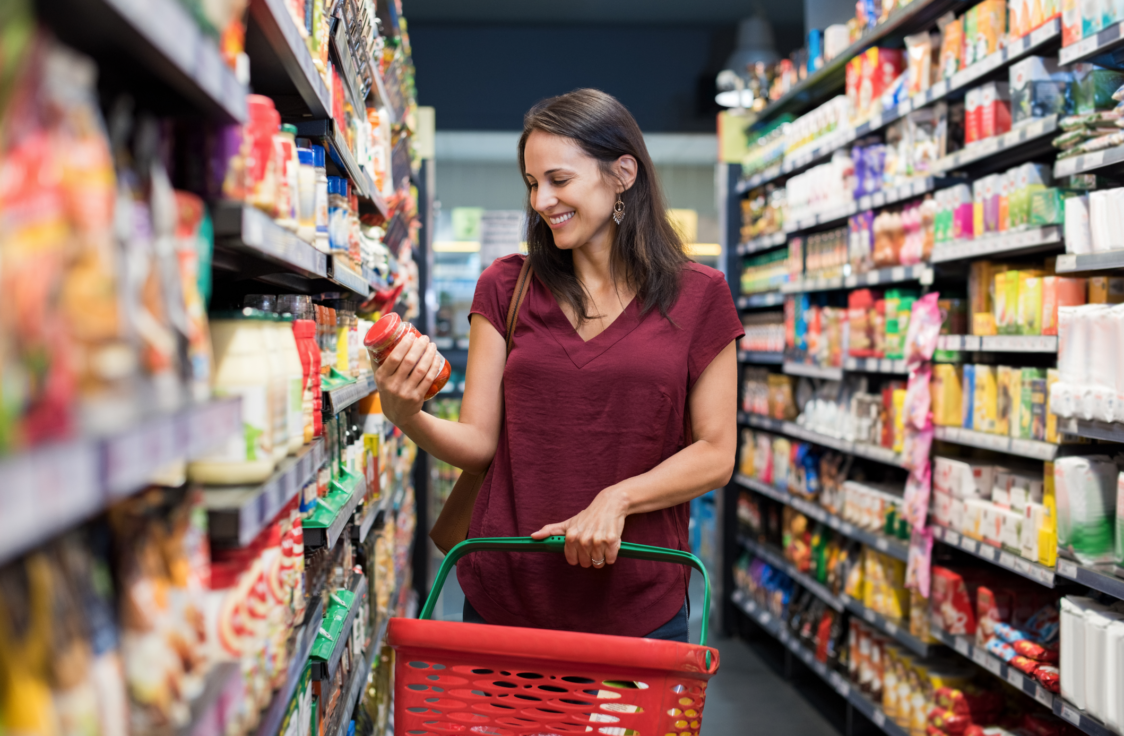
Fat
This value indicates the total amount of fat in the food. This includes both saturated and unsaturated fats.
| Per 100 g of food | |
|---|---|
| Fat | 34 g |
| – of which saturated fatty acids | 19 g |
This value indicates the proportion of saturated fatty acids in the total amount of fat. Their amount should not be more than 10% of your total daily energy intake. Excessive intake of saturated fatty acids increases the risk of cardiovascular diseases.
Watch the fat content of cured meats, dairy products and other packaged animal products. However, also be careful when buying various cookies, chocolates and other sweets. These foods often contain coconut or palm oil, which are a source of saturated fatty acids. You’d be surprised how much fat a package of chocolate-dipped cookies can contain. 100 g of them can contain up to 28 g of fat, half of which is saturated fat.
Trans fatty acids
Consumption of trans fatty acids (TFA) increases the risk of developing cardiovascular diseases. Their natural source is the tissues of ruminants, but they are also produced during the industrial processing of fats. It is TFA arising from incorrect technological modification that can be dangerous. They come from partially solidified fats, which are typically found, for example, in cheap sweets, puff pastry, low-quality chocolate toppings, chocolate substitutes, etc. However, you will not find this information on food packaging. Therefore, pay more attention to reading the composition and avoid foods that contain partially solidified fat. This way, you will successfully remove the largest sources of trans fatty acids from your diet. [1]

Salt
You shouldn’t consume more than 5 g of salt per day. It is easy to exceed this limit, therefore it is necessary not only to limit salting when cooking and preparing food, but also to monitor the salt content in food.
Foods with high salt content:
- blue cheese, Balkan type cheese, Halloumi, string cheese, etc. (Brie has up to 1 g of salt per 100 g)
- ham, sausages, salami and other cured meats (100 g of sausages contains up to 2 g of salt)
- pastries, especially those sprinkled with salt (Kaiser roll contains about 1 g of salt)
- semi-finished goods
- breakfast cereals
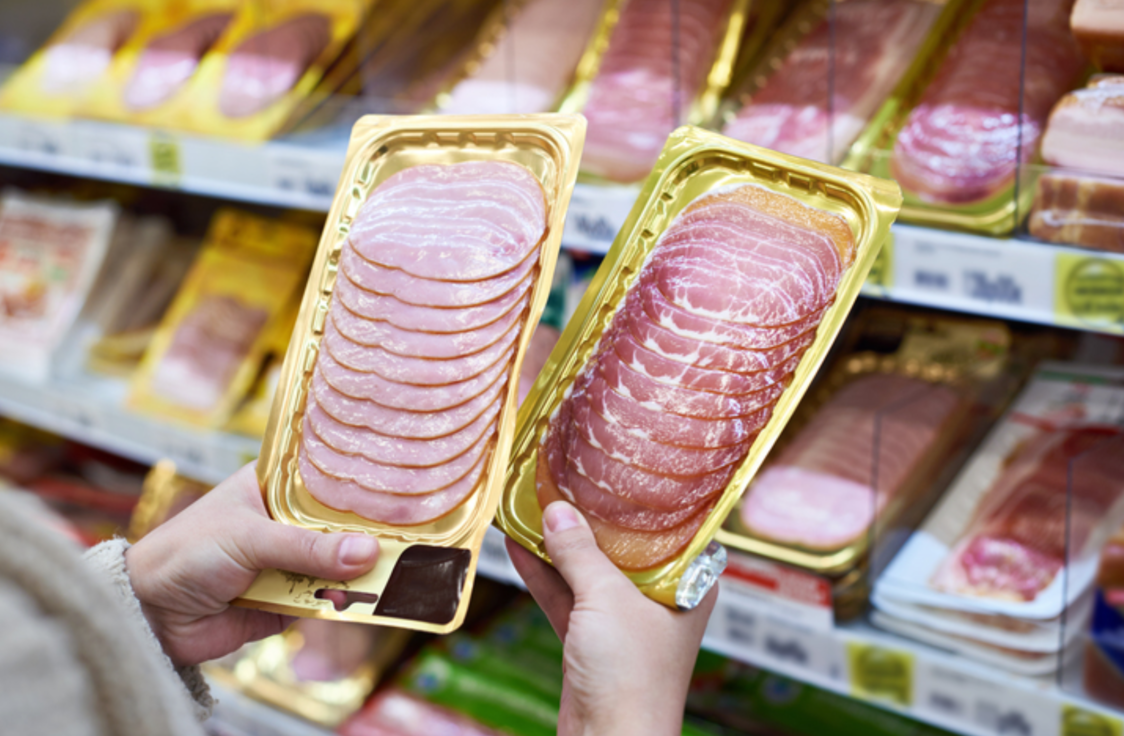
3. Food Additives
In Europe, substances marked with the letter “E” and three numbers are probably the biggest scare on food packaging. This label hides additives that are added to food in order to increase its quality – to improve colour, smell, extend shelf life, etc. These are, for example, colourings, sweeteners, preservatives, gelling agents, etc.
They are considered a “biohazard” and foods that are said to not contain any of them are very popular. But the letter “E” actually reassures that the substance marked in this way is safe and meets European regulations. Each additive that appears in the food has undergone extensive tests and has been approved by the European Food Safety Authority (EFSA). [11]
Some antioxidants, vitamins, natural colourings, polyalcohols used as sweeteners, etc. are also considered additives. Here are some examples:
- Curcumin (E100), naturally contained in turmeric, is used as a colouring.
- Chlorophyll (E140) is a pigment that gives plants (not only the inedible ones, but also salads, for example) their green colour. It is also used as a colouring.
- Ascorbic acid, otherwise known as vitamin C (E300), plays the role of an antioxidant in food.
- Guar gum (E412) is a fibre naturally occurring in guar beans (a legume native to Asia). It serves as an emulsifier and thickener in food. [7]
Even an ordinary “natural” banana is actually full of chemicals. It contains, for example:
- sugar (glucose, fructose, etc.), starch
- amino acids (glutamic acid, aspartic acid, lysine, arginine, valine, etc.)
- fatty acids (linoleic acid, stearic acid, oleic acid, etc.)
- riboflavin, which serves as a colouring
- its flavour and colour are produced by, for example, 3-methylbut-1-yl, 2-methylbut-1-yl, ethyl butanoate, pentyl acetate and many others
If you search your memory, you will surely remember that all these substances were mentioned in chemistry classes. Chemical compounds are not only created in laboratories. In many cases, they are formed by nature itself and are literally in everything “natural” around us. So you definitely don’t need to be afraid of them.
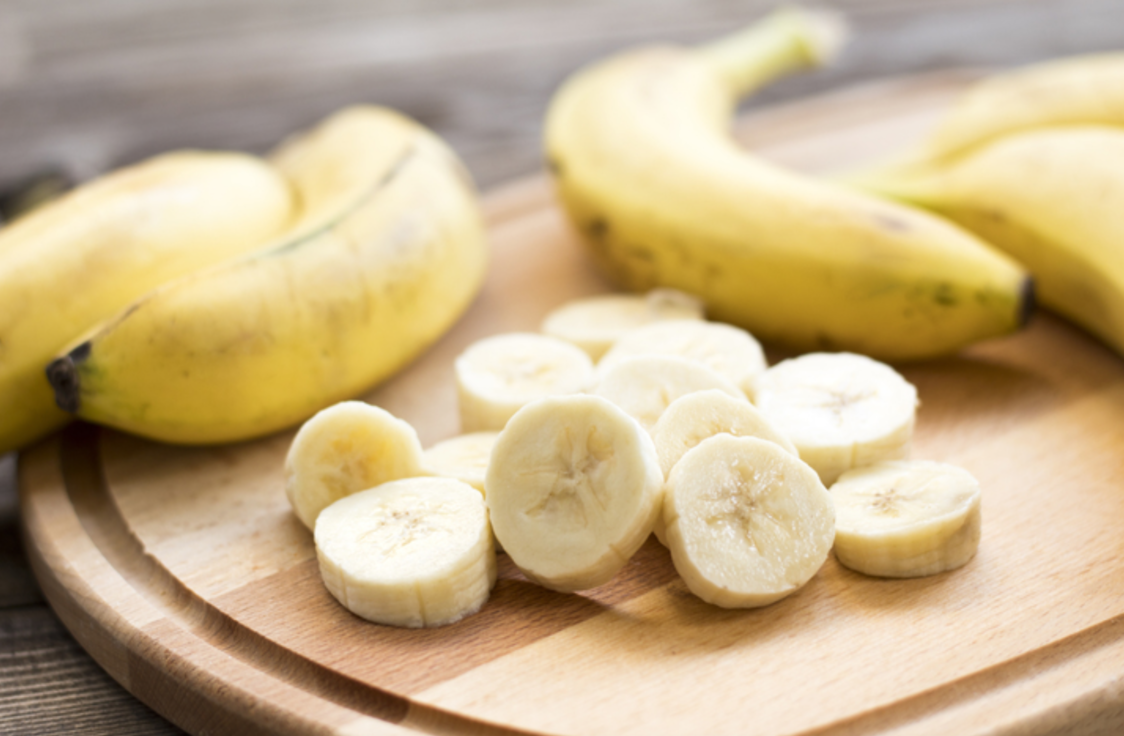
4. Allergens
If you have food allergies, this section is probably the most important for you. Allergens are always distinguished from other ingredients in the food composition. For example, they are written in a different type of font, are highlighted, have a different colour or a different background colour. However, when the allergen is mentioned in the name of the food (e.g. milk rice, where the allergen is milk), it doesn’t need to be listed. [18]
The official list of allergens contains 14 items:
- Cereals containing gluten
- Crustaceans
- Eggs
- Fish
- Peanuts
- Soy
- Milk
- Shell fruits
- Cellery
- Mustard
- Sesame
- Sulfur dioxide and sulfites
- Lupin
- Shellfish [18]
How to understand the statement that food contains just traces of an allergen?
You will often come across that the food contains “traces” of some allergen, for example “traces of gluten”. With this, the manufacturer makes known that the food is produced in a factory where the given allergen is used and it is possible that the food is contaminated with it. For example, a product containing only gluten-free ingredients may be produced in a place where wheat is also processed (contains gluten). In this case, the manufacturer would state on the packaging that the food may contain traces of gluten. This is an amount that the manufacturer was not able to detect with the laboratory methods used, and therefore lists these allergens there as a precaution.

5. Best Before and Expiration Date
Until now, you might have thought that these two different date markings meant the same thing. However, that’s not how it is.
- Best before date is used for long shelf life foods, such as pasta, canned foods, cereals, etc. These foods can be consumed even after the stated date. However, sellers can sell them only if they state that the best before date has passed and they also have to separate them from other foods.
- Expiration date (often written as “Use by“) is used for perishable foods. These are, for example, dairy products or cured meats. After this date, the food is no longer considered safe to eat. [18]
If you want to learn more about shelf life and food storage, read our article How to Properly Store Food to Make It Last as Long as Possible.

6. Quality Labels
You have probably noticed that foods are often labelled with different coloured stickers. At first glance, it may seem that this is just a marketing move, but in fact, these are labels that guarantee the quality of the food. They are awarded by state institutions or private organizations based on certain criteria – nutritional value of the food, origin of the raw materials used, production technology, etc. However, at the same time, there are also labels that are nothing more than a marketing move, so it is beneficial to know who is behind the given logo.
Labels awarded by the European Union
The European Union has a system in place called Protected Geographical Indications that includes three food quality labels.
Traditional Speciality Guaranteed
This label is used for foods that have been produced for a long time using traditional methods and traditional raw materials are used in their production. [12]
What foods have this label? For example:
- Slovakia: Bratislava rolls, Spiš sausages
- Czech Republic: Prague ham
- Poland: Old Country Style Polish Sausage
- Hungary: quark, Pogača
- Italy: pizza, Mozzarella [15,21]

Protected Designation of Origin
In order for some food to be labelled as such, its entire production must take place in the region where it comes from. At the same time, the food must have properties specific to this area. [12]
What foods have this label?
- Slovakia: Žitavská paprika seasoning
- Czech Republic: Czech cumin, Pohořelice carp
- Austria: Tyrolean gray cheese, Vorarlberg mountain cheese
- Greece: Feta cheese
- Poland: Bryndza Podhalańska, Oštiepok smoked cheese [10]
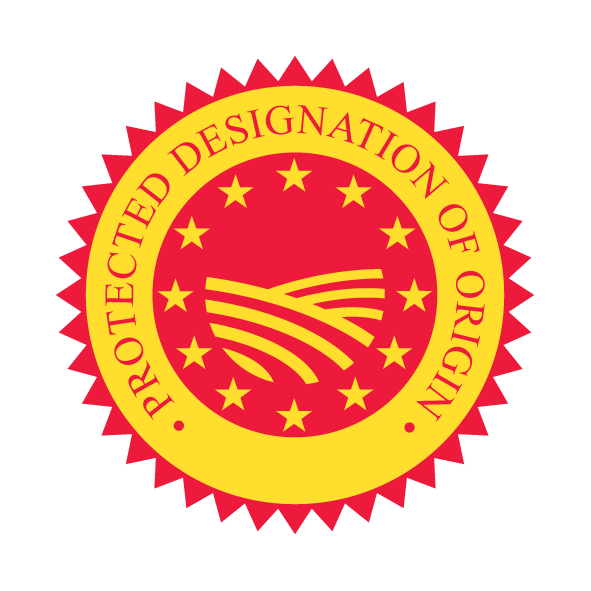
Protected Geographical Indication
This label tells us that at least one phase of production (production, processing, etc.) took place in the region where the food comes from. These foods must also be typical for a certain region. [12]
What foods have this label?
- Slovakia: Chimney cake from Skalice, Smoked Parenica
- Czech Republic: Olomouc curd ripened cheese, Pardubice gingerbread
- Italy: Prosciutto
- Austria: Marchfeld asparagus [10,13,23]
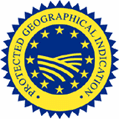
Other international labels
Nutri-score
Recently, labels resembling a traffic light have begun to appear on food packaging. Nutri-score originated in France and is currently used in some European countries (besides France, for example in Italy, Netherlands, Belgium, etc.). At the same time, it is being discussed that it could eventually be introduced in all countries of the European Union. This system evaluates food based on energy and nutrient content. Points are added and subtracted for energy and nutrient content, and the result is calculated using a scientific algorithm. The customer sees the final evaluation in the form of a specific letter and colour. The letter A and the dark green colour represent the best rating, while the worst result is the letter E and the red colour. Nutri-score helps people easily and clearly navigate their food choices. [19,20]
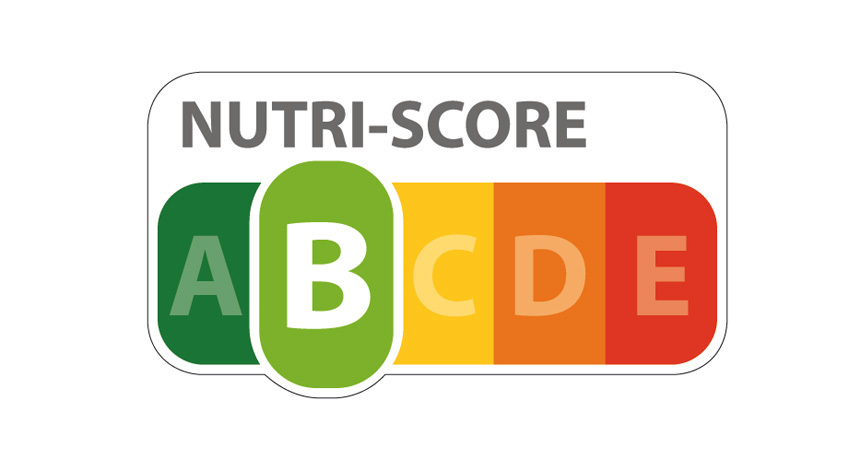
Bio Food
Food marked with “bio” logo or inscription is not automatically healthier and does not have better nutritional values than “non-bio” food. This label means that the food is a product of bio farming and was produced under strict and controlled conditions.
Examples of bio farming rules:
- It is forbidden to use synthetic fertilizers, pesticides, etc.
- The welfare of the farmed animals is important – they must have sufficient living space, facilities for rest, enough quality feed, etc.
- The use of antibiotics is limited to cases where it is necessary for the health of the animal. [3]
In the stores, you can find a European bio food label that looks like this:
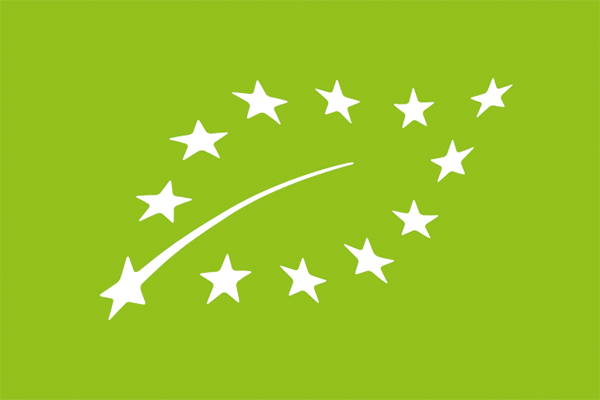
According to European guidelines, a product is truly bio only if it contains this label. If a product is labelled as natural, eco, organic, etc., it does not belong to bio food.
7. Health and Nutrition Claims
This title entails all those claims on food packages that inform you that the food is high in protein and fibre or low in fat. The vast majority of them are not a marketing strategy, as many think. It is a label based on food labelling legislation. Approval of these claims is in the hands of the European Commission. They can appear on the package only if the food meets strict criteria. If manufacturers do not comply with them, they can face a ban of this specific food or a fine.
Nutritional Claims
They are focused on the nutrient content of the food. They can be indicated on the packaging only if the food has beneficial nutritional properties and meets the criteria for the content of the nutrient to which the claim relates.
Examples of health claims on food packaging:
- Low fat : The claim can only be made when the food has no more than 3 g of fat per 100 g or 1.5 g of fat per 100 ml.
- Sugar-free: Can be on the packaging only if the product does not contain more than 0.5 g of sugar per 100 g or 100 ml.
- No added sugar: The product does not contain any added sugars (monosaccharides and disaccharides). However, these foods may contain naturally occurring sugars.
- Source of fibre: Food can be called a source of fibre only when it contains more than 3 g of fibre per 100 g or 1.5 g of fibre per 100 kcal.
- High in protein: The claim can be made when more than 20% of the energy value of the food is protein. [17]
Providing nutrition claims is optional, so definitely do not consider them as the main guide when buying food. It is still true that first of all it is necessary to look at the ingredients list and nutrition facts. This is the best way to find out the nutritional value of the food you buy.

Foods that don’t have any claims on the packaging, but would certainly deserve some, are for example:
- Legumes, as well as legume pasta, can be called a source of fibre. 100 g of raw lentils and lentil pasta contain 15 g of fiber.
- 100 g of raw whole grain pasta contains 8 g of fibre. It is also an excellent source of fibre.
- Oats have 15 g of fibre per 100 g.
- Low-fat quark has 17 g of protein per 100 g, which is 70% of its total energy value. Without a doubt, it can be considered as food with a high protein content.
- A high amount of protein can also be obtained from eggs, or just egg whites, which have 10 g of protein per 100 g.
- All instant cereal porridges, which contain nothing but the cereals themselves, certainly deserve the claim “sugar-free”.
Health claims
Health claims describe the association between a food, food group or nutrient and health benefits. The claims must be based on scientific evidence.
Examples of health claims on food packaging:
- Docosahexaenoic acid (omega-3 fatty acid) contributes to maintaining optimal brain activity.
- Vitamin D contributes to the optimal function of the immune system.
- Calcium is needed to maintain good bone health.
- Vitamin C contributes to normal collagen formation for optimal skin function. [9]
Claims that are not verified
Unfortunately, not all information on food packaging have clear rules governing their use. A large number of foods bear messages such as For children, Wellness, Fitness, Vegan, etc. However, there are no criteria that would determine what ingredients list or nutritional values such labelled foods should have. Therefore, take these labels with a grain of salt and rather focus again on the ingredients list of the food and nutrition facts table, which will tell you the whole truth.
What should you remember?
The first look at the food packaging can often be confusing. But if you persevere and focus on a few basics, you’ll be a pro in no time. First of all, always pay attention to the ingredients list of the food. Limit foods with extensively long list of ingredients and a large amount of additives. Don’t forget about the nutrition facts table to check the energy value and nutrient content of the food. Quality labels or nutritional and health claims can help you to make the right choice. And those who suffer from allergies should not forget about the list of allergens, and anyone who doesn’t like spending their days with intestinal problems should know the difference between the use-by date and best before date.
If the article taught you something new, don’t keep it to yourself and spread it by sharing it with your friends.
[1] DUYFF, R.L. Complete Food & Nutrition Guide. . New York: Academy of Nutrition and Dietetics, 2017. ISBN 978-0-544-52058-5.
[2] EFSA PANEL ON DIETETIC PRODUCTS, NUTRITION, AND ALLERGIES (NDA) Scientific Opinion on Dietary Reference Values for carbohydrates and dietary fibre. In EFSA Journal . 2010. Vol. 8, no. 3, s. 1462. .
[3] EUROPEAN COMMISSION Organic production and products. In European Commission – https://ec.europa.eu/info/food-farming-fisheries/farming/organic-farming/organic-production-and-products_en
[4] EUROPEAN FOOD SAFETY AUTHORITY EFSA sets European dietary reference values for nutrient intakes – https://www.efsa.europa.eu/en/press/news/nda100326
[5] KVAPIL, P. Kdo za iniciativou a logem stojí – https://www.vimcojim.cz/vim-co-jim/o-spolecnosti/o-nas/Kdo-za-iniciativou-a-logem-stoji__s750x7427.html
[6] SR, M. Pôdohospodárstva a rozvoja vidieka Podľa Značky kvality SK sa orientuje stále viac obchodníkov i kupujúcich. In MPRV SR – https://www.mpsr.sk/podla-znacky-kvality-sk-sa-orientuje-stale-viac-obchodnikov-i-kupujucich/125---8123
[7] Approved additives and E numbers. In Food Standards Agency – https://www.food.gov.uk/business-guidance/approved-additives-and-e-numbers
[8] EU - Labelling Requirements | CE Intelligence. In – https://www.ceintelligence.com/content_manager/contentPages/view/eu-labelling-requirements
[9] EU Register of nutrition and health claims made on foods (v.3.6). – https://ec.europa.eu/food/safety/labelling_nutrition/claims/register/public/?event=search
[10] European Quality Schemes | More than Food. In – https://europa.eu/more-than-food-uae/european-quality-schemes
[11] Food Labelling Basics: How Well Do You Understand E Numbers? – https://www.nutritics.com/en/resources/blog/food-labelling-basics-how-well-do-you-understand-e-numbers
[12] Geographical indications and quality schemes explained. – https://agriculture.ec.europa.eu/farming/geographical-indications-and-quality-schemes/geographical-indications-and-quality-schemes-explained_en
[13] Chráněné zeměpisné označení (Potraviny, eAGRI) – https://eagri.cz/public/web/mze/potraviny/znacky-kvality-potravin/chranena-zemepisna-oznaceni
[14] KLASA (Potraviny, eAGRI). – https://eagri.cz/public/web/mze/potraviny/znacky-kvality-potravin/narodni-program-podpory-potravin-klasa/
[15] Politika kvality – https://www.mpsr.sk/politikakvality/index.php?go=1
[16] Regionální potravina (Potraviny, eAGRI) – https://eagri.cz/public/web/mze/potraviny/znacky-kvality-potravin/regionalni-potraviny.
[17] Regulation (EU) No 1169/2011 of the European Parliament and of the Council of 25 October 2011 on the provision of food information to consumers, amending Regulations (EC) No 1924/2006 and (EC) No 1925/2006 of the European Parliament and of the Council, and repealing Commission Directive 87/250/EEC, Council Directive 90/496/EEC, Commission Directive 1999/10/EC, Directive 2000/13/EC of the European Parliament and of the Council, Commission Directives 2002/67/EC and 2008/5/EC and Commission Regulation (EC) No 608/2004 (Text with EEA relevance) – https://www.legislation.gov.uk/eur/2011/1169/contents?view=plain
[18] The Nutri-Score: A Science-Based Front-of-Pack Nutrition Label, IARC Evidence Summary Brief No. 2 – IARC – https://www.iarc.who.int/featured-news/brief2-nutri-score/
[19] WHO: EU-wide introduction of Nutri-Score necessary. – https://www.foodwatch.org/en/news/2021/who-eu-wide-introduction-of-nutri-score-necessary/?cookieLevel=not-set
[20] Zaručené tradiční speciality (Potraviny, eAGRI). – https://eagri.cz/public/web/mze/potraviny/znacky-kvality-potravin/zarucene-tradicni-speciality
[21] Značky kvality potravin (Potraviny, eAGRI) – https://eagri.cz/public/web/mze/potraviny/znacky-kvality-potravin
[22] Zoznam označení pôvodu a zemepisných označení zaslaných na zápis do registra chránených označení pôvodu a chránených zemepisných označení vedeného Európskou komisiou | Úrad priemyselného vlastníctva Slovenskej republiky – https://www.indprop.gov.sk/oznacenia-povodu-vyrobkov-a-zemepisne-oznacenia-vyrobkov/oznacenia-povodu-a-zemepisne-oznacenia/zoznam-op-zo-zaslanych-ek


Add a comment